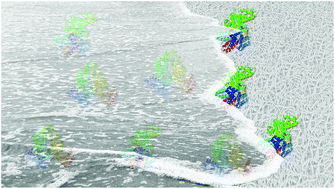Addressing the distribution of proteins spotted on μPADs
Abstract
Adsorption is the most common approach to immobilize biorecognition elements on the surface of paper-based devices. Adsorption is also the route selected to coat the substrate with albumin, therefore minimizing the interaction of other proteins. While similar in nature, the structure of the selected proteins as well as the conditions selected from the immobilization have a significant effect on the amount and distribution of the resulting composites. To illustrate these differences and provide general guidelines to efficiently prepare these devices, this article explores the interaction (adsorption and desorption) of BSA with 3MM chromatography paper. The experimental conditions investigated were the protein concentration, the interaction time, the number of times the protein was spotted, the pH of buffer solution, and the ionic strength of the buffer solution. The proposed approach mimics the steps involved in the fabrication (adsorption) and use (rinsing induced by the sample) of paper-based microfluidic devices. To identify the protein location following the rinsing step, the protein was fixed by dehydration in a convection oven and then stained using Coomassie Blue. The color intensity, which was found to be proportional to the amount of protein immobilized, was determined using a desktop scanner. To highlight the importance of understanding the adsorption process to the rational development of μPADs, results were complemented by experiments performed with lysozyme and immunoglobulin G.



 Please wait while we load your content...
Please wait while we load your content...